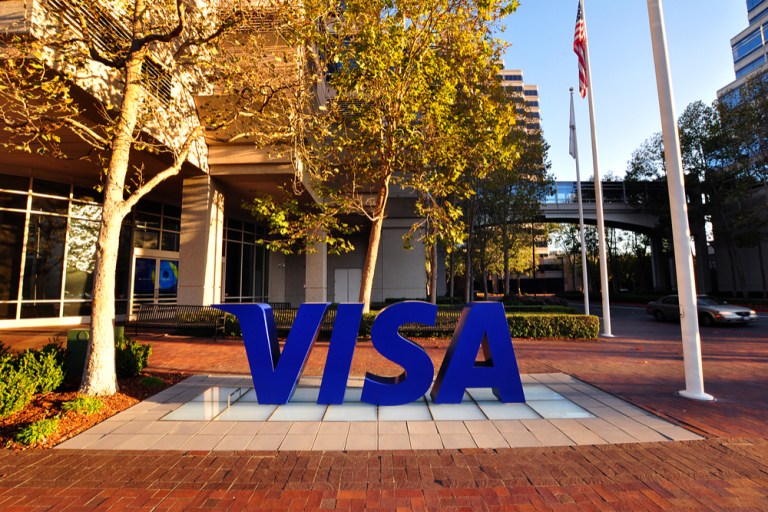
To say that cross-border B2B payments could use an efficiency reset not only states the obvious, but is an understatement about the state of money movement around the world.
Inefficiencies related to the speed of transfer and settlement, the transparency of how money is moved, how much it costs to move it and the inconsistent or incomplete data that moves (or doesn’t move) along with it are just some of the B2B cross-border challenges that banks and their customers are facing, day in and day out.
It’s a set of inefficiencies that – according to Vicky Bindra, Visa’s head of global products and solutions – drove Visa to create and launch Visa B2B Connect.
“There is an opportunity [in commercial payments] that we, as an industry, haven’t spent enough time focusing on,” Bindra told Webster earlier this year. “But we’ve invested a lot of energy over the last year rethinking how commercial payments pain points have always been addressed, then creating solutions that go well beyond what’s been done in the past.”
Those solutions, Bindra explained then, are designed to connect FIs using a set of tools, including private, enterprise-grade, blockchain-type networks to facilitate global payments and settlement, securely and in real time.
The world got its first look at Visa B2B Connect in action last week, when Visa previewed the solution in Singapore during the nation’s FinTech Festival. There, bank-to-bank transactions were sent between a few of its growing base of bank partners, including the U.S.’s Commerce Bank, South Korea’s Shinhan Bank, the Philippines’ Union Bank and Singapore’s United Overseas Bank. More FIs plan to join the Visa B2B Connect platform moving forward, Visa announced.
“We’ll continue to run the bank-to-bank pilot over the next quarter, and then we’ll migrate into corporate-to-corporate payments and build scalability from there,” Visa’s head of global business solutions, Kevin Phalen, told Webster shortly after the successful test last week.
An Efficient Approach To Creating B2B Efficiencies
Finding a more efficient way of moving money on a global basis, Phalen said, is critical given the friction that today’s businesses experience when they want to move money across borders.
According to Phalen, Visa B2B Connect eliminates that friction by taking an innovative technology, like distributed ledger, and applying it to an existing global payments infrastructure – the Visa rails – rather than building brand-new ones from scratch.
Phalen emphasized that it’s hardly realistic to create a global network of FIs with a reputation for security and reliability from ground zero, in a timeframe that would solve the global B2B payments challenges facing today’s corporates. However, he added, neither is it realistic to ignore the potential for using distributed ledger technology to enhance the speed, security and reliability of cross-border transactions.
“As we continue to look at and understand [distributed ledger technologies],” Phalen said, “we believe it can make things more efficient.”
Visa’s solution uses distributed ledger technology that leverages Visa’s existing global network of issuers to create private, permissioned networks that digitize the assets issued by members of that network. Phalen said that leveraging Visa’s base of 15,000 financial institutions – who currently use Visa rails to move money around the world safely, reliably and compliantly – is a critical foundation for achieving the interoperability and ubiquity needed to ignite real-time B2B cross-border payments at scale. He also emphasized the need to leverage a trusted, secure network such as Visa, which been in existence for nearly 60 years.
Phalen pointed out that the successful test in Singapore and the broader mission of Visa B2B Connect isn’t just looking at individual points of friction in corporate payments, like digitizing accounts payable or electronifying invoices.
Visa’s B2B solutions will incorporate many of the innovations first popularized in the B2C world: mobile payments, push payments, voice-activated payments and P2P – giving FIs and their partners an opportunity to take a more holistic approach to innovating the entire commercial payments flow. Phalen’s belief is that the innovators across the global supply chain will be interested in collaborating with Visa, as their innovations have a shot at getting to scale as part of a trusted, secure, interconnected network that already operates at scale on a worldwide basis.
“We’re now transacting on a global basis in this space, which is ripe for innovation and improvement,” he said. “We’ve gone from concept to development, to doing bank-to-bank transactions, in a relatively short span of time.”
As Visa B2B Connect moves forward, Phalen said that Visa will continue to work with central banks and regulators, supporting their efforts to create greater efficiency and transparency in global corporate payments. Corporate treasurers have identified a lack of payments visibility as one of their biggest problems in cross-border transacting.
“From a speed perspective, faster is going to be critical,” said Phalen. “We want to make sure that with speed comes transparency as to where the payment is. Not only do we want payments to be faster, we want to make sure there is visibility from origination all the way through the receiving of the payment.”